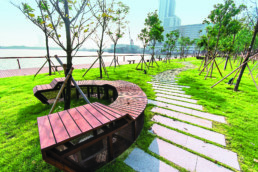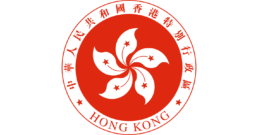In redeveloping the old industrial Kowloon East neighborhood into a thriving central business district, Hong Kong is employing innovative infrastructure that will reduce energy consumption, improve mobility, and conserve environmental resources.
The Energizing Kowloon East redevelopment project aims not only to transform Kowloon East into an additional central business district of Hong Kong but also a resilient, low-carbon community. To achieve this, the city has installed a large-scale district cooling system, serving about 1.73 million m2 of floor space. Furthermore, both new and existing buildings in the district will have to adopt green certifications and provide electric vehicle charging facilities. So far, the 30 green building projects in Kowloon East have reduced CO2 emissions by 56,100 metric tons annually.

In addition to reductions in energy use, the city is promoting active mobility in Kowloon East by improving walkability and well-integrated pedestrian networks. The district is also conscious of its adaptation measures, working to improve drainage and water quality while ramping up flood protection capacity. Boosting this effort, one-third of Kowloon East will be public space, and 60% of that land will consist of green areas.
59,500 metric tons of CO2 emission per year will be reduced due to Kowloon East’s district cooling system
The challenge
Hong Kong had the double challenge to render Kowloon East economically attractive while ensuring the area’s CO2 mitigating abilities and resilience to climate change in the face of increasing water levels. The city integrated green development directives and policy into the neighborhood’s redevelopment plan to ensure that climate impacts were mitigated.
Co-benefits
Economic The district cooling system saves up to 10% of the private capital required to build conventional cooling plants and enables more flexible building design.
Environmental Compared with the 2011 base value, NO2, PM10, and PM2.5 concentrations in the Kwun Tong section of Kowloon East had decreased by 12.7%, 10.2%, and 12.9%, respectively, in 2015.
Health Various pedestrian-centric improvements promote active mobility, which will result in positive health outcomes for the community.
Social The remediated waterfronts have become popular destination for art and cultural events in the district.
About Hong Kong
Hong Kong is an autonomous territory on China’s south coast. It has an area of 1,104 km2, and with a population of around 7.2 million, Hong Kong is the world’s fourth most densely populated country or territory. Hong Kong is one of the world’s most significant financial centres, with the highest Financial Development Index score and consistently ranks as the world’s most competitive and freest economic entity. Nicknamed “Pearl of the Orient”, Hong Kong is renowned for its deep natural harbour, which boosts the world’s 5th busiest port and its impressive skyline, with the most skyscrapers in the world.


